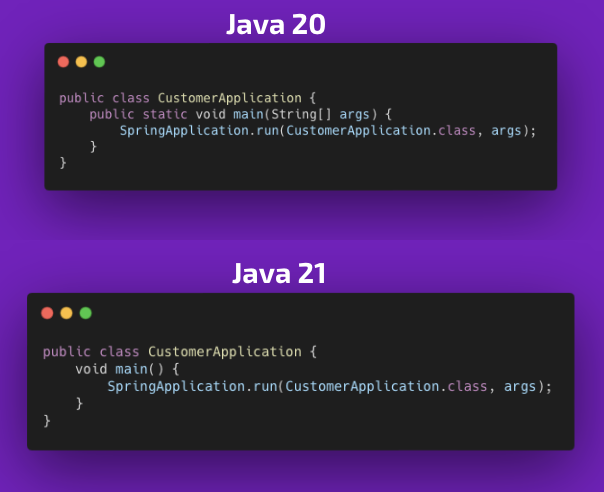Date: 26-Sep-2023
AWS Announcements Wi...
Before heading to AWS re:Inven...
Tools like Spring Framework and Spring Boot are crucial for creating Java-based applications. The new features and performance enhancements offered by Java 21 can help your Spring-based projects. This article will examine the technical facets of upgrading to Java 21 using Spring Framework and Spring Boot, offering you crucial advice and guidance to help you effectively complete this move.

Conduct a comprehensive compatibility audit of your Spring-based project before switching to Java 21. Consider the following important steps:
Make sure you're utilizing the most recent versions of Spring Framework and Spring Boot by updating your versions of those two frameworks.
Make that all other project requirements are likewise compatible with Java 21 by reviewing the dependencies.
Recognize any mismatches in your Spring-based project that require correction to be compatible with Java 21.
Java has a modular framework as of version 9. Investigate the possibilities for using this technology in your Spring-based projects.
Create Logical Modules for Your Project: Logical module organization of your Spring components helps improve project organization.
Learn how to successfully integrate Spring projects with the modular system by reading "Integrating Spring with the Module System."
New language features introduced in Java 21 may be helpful for your Spring-based projects. Be aware of how to make the most of them.
Examine the effectiveness of using pattern matching to update your Spring components.
Switch Expressions: Discover how switch expressions can increase the effectiveness of your Spring components.
Performance gains and improved security features come with the switch to Java 21. Adaptively optimize your Spring-based projects.
Performance testing: Evaluate how well your Spring application and components perform and make any necessary adjustments.
Security Improvements: Implement the security enhancements provided by Java 21 to strengthen the security of your application.
Garbage collection has undergone new innovations and enhancements with Java 21. Performance and efficient resource use depend on selecting the appropriate trash collector and configuring it to your project's needs.
Explore the many garbage collector types offered by Java 21 (such as G1, ZGC, or Shenandoah) and pick the one that best satisfies the requirements of your project.
Configuration: Based on the specifications of your project, optimize the trash collector settings. Garbage collector settings are extremely crucial, especially in large and high-load applications.
Monitoring and analysis: Keep an eye on garbage collector performance, and when necessary, evaluate it. This guarantees the efficient operation of your application and aids in avoiding unneeded delays.
Ecosystems like Spring Boot and the Spring Framework are always changing. Try to keep your employees up to date on new advances and offer regular training.
Your projects may become more contemporary, dependable, and effective if you upgrade to Java 21 and use Spring Framework and Spring Boot. But it necessitates meticulous preparation, compatibility testing, and technological know-how. The above-mentioned advice and tactics are meant to help you manage the conversion of your Spring-based projects to Java 21 successfully.
Software Consultant at kloia
Before heading to AWS re:Inven...
Kubernetes is the de facto sta...
Retrieval Augmented Generation...
Generative AI (Gen AI) is no l...
In the ever-evolving landscape...